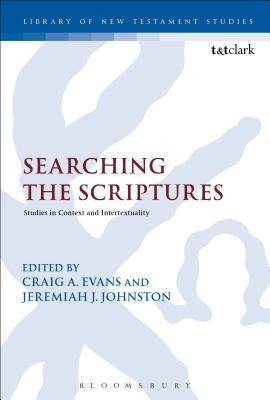
- We will send in 10–14 business days.
- Author: Craig A Evans
- Publisher: Bloomsbury Publishing PLC
- ISBN-10: 0567663825
- ISBN-13: 9780567663825
- Format: 15.6 x 23.4 x 2.2 cm, kieti viršeliai
- Language: English
- SAVE -10% with code: EXTRA
Reviews
Description
This work critically engages the hermeneutical methods used to analyse the New Testament writings, so that the lenses through which studies of the texts have been traditionally viewed can be revised. Jeremy Hultin contributes an article on the rhetorical use of the chosen citations by Jewish rabbis in their commentary on scripture, while Mark Gignilliat writes on the potential implications for viewing Old Testament Scripture in the manner of the early Church exegetes and theologians. With these two contributions providing a frame for the other chapters, the essays explore a range of topics including the significance of the number 42 in Matthew; the study of Wisdom in Matthew, the extent to which the four gospels are underlined by Hebrew material, if any; the use of Hebrew material in shaping New Testament writings; and the uses of Scripture in the letters of Paul and the letters to the Hebrews.
Read separately, these articles provide fascinating insights and revisions to established ideas on intertextuality between the Old/Hebrew Bible and the New Testament writings. Taken together, the collection presents a solid argument for the fundamental revision of our current hermeneutical practice in Biblical Studies.
EXTRA 10 % discount with code: EXTRA
The promotion ends in 21d.05:29:36
The discount code is valid when purchasing from 10 €. Discounts do not stack.
- Author: Craig A Evans
- Publisher: Bloomsbury Publishing PLC
- ISBN-10: 0567663825
- ISBN-13: 9780567663825
- Format: 15.6 x 23.4 x 2.2 cm, kieti viršeliai
- Language: English English
This work critically engages the hermeneutical methods used to analyse the New Testament writings, so that the lenses through which studies of the texts have been traditionally viewed can be revised. Jeremy Hultin contributes an article on the rhetorical use of the chosen citations by Jewish rabbis in their commentary on scripture, while Mark Gignilliat writes on the potential implications for viewing Old Testament Scripture in the manner of the early Church exegetes and theologians. With these two contributions providing a frame for the other chapters, the essays explore a range of topics including the significance of the number 42 in Matthew; the study of Wisdom in Matthew, the extent to which the four gospels are underlined by Hebrew material, if any; the use of Hebrew material in shaping New Testament writings; and the uses of Scripture in the letters of Paul and the letters to the Hebrews.
Read separately, these articles provide fascinating insights and revisions to established ideas on intertextuality between the Old/Hebrew Bible and the New Testament writings. Taken together, the collection presents a solid argument for the fundamental revision of our current hermeneutical practice in Biblical Studies.


Reviews